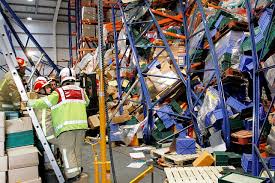AHGRL (AHG Refrigerated Logistics): What It Is, What’s Changing & Why It Matters

What is AHGRL (AHG Refrigerated Logistics)?
AHG Refrigerated Logistics, often abbreviated AHGRL, is a major cold chain logistics and supply chain company in Australia. It specializes in temperature-controlled transport and warehousing, handling perishable goods, grocery supply, food-service distribution, and maintaining the cold-chain integrity from producer to retailer.
Key facts:
-
Headquartered in Homebush, New South Wales.
-
It has operations all across Australia, including major depots in capital cities and many regional centres.
-
It handles cold storage, refrigerated transport, multi-modal distribution, 3PL/B2B services, and related logistics functions.
AHGRL has been recognized as Australia’s only truly national temperature-controlled supply chain network after merging or integrating several regional operators (Scott’s, Rand, Harris, JAT).
Services & Operational Capabilities
To understand why AHGRL is important, it helps to look at what it does and how:
-
Cold Storage / Warehousing: It provides large warehouses with temperature control, offering storage that meets strict standards for perishable goods.
-
Refrigerated Transport / Road Freight: It operates an extensive network of refrigerated road transport, including linehaul (long-distance) and pickup/delivery services.
-
Multi-Modal Distribution: Using different transport modes (road, possibly rail) to optimize routing, cost, and efficiency
-
3PL / B2B Supply Chain Solutions: It works for other businesses (e.g. food manufacturers, exporters, retailers), handling logistics end-to-end.
AHGRL also maintains compliance with regulatory frameworks, such as the Chain of Responsibility legislation in Australia, which mandates legal duties for safety and transport practices.
Recent Changes & Rebranding: From AHGRL to Scotts RL
One of the biggest developments is that AHGRL is undergoing a rebranding. Some of the key changes include:
-
The company will now be known as Scott’s Refrigerated Logistics or ScottsRL.
-
The names AHG Refrigerated Logistics and AHGRL are being phased out.
-
Several existing brands under its umbrella — SRF, Rand, JAT — are being retired.
-
Although branding, fleet names, facility signage, and documentation will change, the legal entities behind certain operations will remain. The ABNs (Australian Business Numbers) of those entities are not changing.
Why this matters:
-
It consolidates identity: having a single, consistent brand (ScottsRL) helps with recognition in the market and among clients.
-
Potentially improves operational efficiencies when overheads in branding, communication, administrative systems, and stakeholder perceptions are streamlined.
-
It could reflect changes in corporate ownership, strategy, or aim to align with existing strengths or historical names. The name “Scott’s” perhaps ties back to the old “Scott’s” business.
Importance in Australia’s Supply Chain & Cold Chain Sector
AHGRL / ScottsRL plays a pivotal role in Australia’s food, grocery, and perishable goods supply chain. Here’s why:
Maintaining Food Quality & Safety
Without reliable refrigerated transport and warehousing, perishable goods (meats, fruits, dairy, seafood) are at risk of spoilage, bacterial growth, or being unsuitable for safe consumption. AHGRL ensures cold-chain integrity.
Supporting Retailers & Exporters
Major grocery chains, food service providers, exporters of perishable products rely on AHGRL for dependable, nationwide logistics. Its reach into regional centres ensures producers outside the main metro areas can still access cold-chain services.
National Scale & Infrastructure
Because it’s one of the few truly national refrigerated logistics networks in Australia, AHGRL has scale in infrastructure: multiple depots, transport fleets, and warehouses. That helps in optimizing routes, reducing delays, and absorbing demand variations.
Economic Impacts
Efficient cold chain logistics help reduce waste, lower costs for consumers, support agricultural producers, and maintain food security. Any disruption or weakness in refrigerated logistics impacts prices, supply, and consumer confidence.
Regulatory Compliance & Environmental Pressure
Refrigeration and transport come with regulatory requirements for safety, emissions, energy use. Customers (especially large retailers) increasingly demand sustainability: low emissions, efficient energy usage, and lower carbon footprint. Companies like AHGRL have to invest in modern, efficient cold storage, transport fleet, and environmentally sustainable practices.
Challenges & Opportunities
Like any large logistics / cold-chain operator, AHGRL / ScottsRL faces several challenges — but also has key opportunities it can tap into.
Challenges:
High Energy Costs & Carbon Emissions
Refrigerated warehouses and trucks consume a lot of power. Rising energy prices and emissions regulation make this expensive.
Maintaining Cold-Chain Integrity
Any break in temperature control (during transport, at warehouses, during hand-overs) can lead to spoilage. Requires precision, monitoring, good equipment, and skilled staff.
Infrastructure in Remote / Rural Areas
Australia has vast remote regions; maintaining reliable refrigeration and fast logistics to those areas is more costly and logistically complex.
Regulatory Complexity
Food safety laws, transport safety, chain of responsibility, environmental laws, emissions standards etc. Constant oversight, changing standards.
Competition & Disruption
New entrants, startups, technology disruption (e.g. drone delivery, last-mile cold chain), shifting consumer expectations (speed, freshness) put pressure on established providers.
Opportunities:
Technology & Automation
Use of IoT sensors, real-time temperature tracking, automated warehouses, predictive maintenance of fleet to reduce downtime.
Sustainability & Green Logistics
Investing in renewable energy for warehouses, more fuel‐efficient or electric refrigerated trucks, better insulation in storage, carbon-offset programs.
Digitalization
Better route planning software, demand forecasting, data analytics to optimize inventory, reduce waste, reduce idle times.
Expansion of Services
Including value-added services (packaging, labelling, quality checking), serving export markets, or integrating more deeply with producers (farm to warehouse etc.).
Brand Reputation & Client Trust
With food safety and product quality, reputation is paramount. Moving to a unified strong brand (ScottsRL) can help reinforce trust, consistency, and clarity in customer communications.
Implications of the Rebranding: What It Means for Stakeholders
The rebranding from AHGRL to ScottsRL has concrete implications for various groups:
For Customers (Retailers, Producers, Distributors)
They may see changes in contract documents, fleet markings, signage, possibly changes in contact details, websites or email addresses. Businesses working with AHGRL should ensure they update records to reflect ScottsRL branding.
Potential improvements in service quality, consistency, perhaps logistics transparency if rebranding comes along with internal reorganizations or upgrade in operations.
For Employees & Operations
Rebranding typically requires internal change: new uniforms, vehicles, signage, systems. There could be retraining or adjustments in workflows.
Employees working in multiple brand lines (SRF, Rand, JAT) will likely see consolidation under ScottsRL; this could streamline reporting, operations, or resource allocations.
For the Market & Competitors
-
ScottsRL will present a unified front in tenders and contracts; that may affect how competitors vie for business.
-
By retiring old sub-brands and consolidating, the company might achieve economies of scale, reduce duplication, lower overhead costs, and potentially offer more competitive pricing or service options.
For Regulators and Compliance
Legal entities (companies under law) apparently are not changing ABNs, so legal obligations remain. However, public documentation, safety regulation filings, transport compliance documents will need updating to reflect new names.
Why AHGRL / ScottsRL Is Important for Consumers & the Wider Public
While much of the discussion is corporate or B2B, AHGRL / ScottsRL impacts consumers, communities, and the broader economy:
Food Availability & Prices: Reliable cold chain reduces spoilage. Less waste means better supply, lower losses for producers/distributors which can help stabilize prices.
Quality & Food Safety: Consumers expect fresh produce, dairy, meat etc. Maintaining temperature throughout transport and storage ensures products are safe and meet standards.
Regional & Rural Access: Farmers and food producers in remote areas depend on cold-chain reach so their perishable products can reach markets without spoilage.
Environmental Impact: As cold chains are energy-intensive, how companies manage emissions, energy usage, and waste (e.g. spoiled goods) has implications for climate impact.
Job Market & Skills Development: Cold chain logistics require trained workforce: drivers, warehouse staff, maintenance, safety officers. The growth, rebranding, and expansion of companies like ScottsRL can create jobs and opportunities.
Conclusion
AHGRL, now evolving into ScottsRL, is a crucial player in Australia’s cold chain and logistics sector. It ensures perishable goods are moved safely, reliably, and efficiently across large distances under temperature control. The recent rebranding reflects strategic consolidation, streamlining of operations, and a move toward unified identity.
For those doing business in food production, retail, supply chain, or logistics, staying aware of these changes is important: contract updates, brand identity, service partners all may be updated. For consumers, it means improved food quality, lower waste, and (hopefully) more efficient supply chains.




